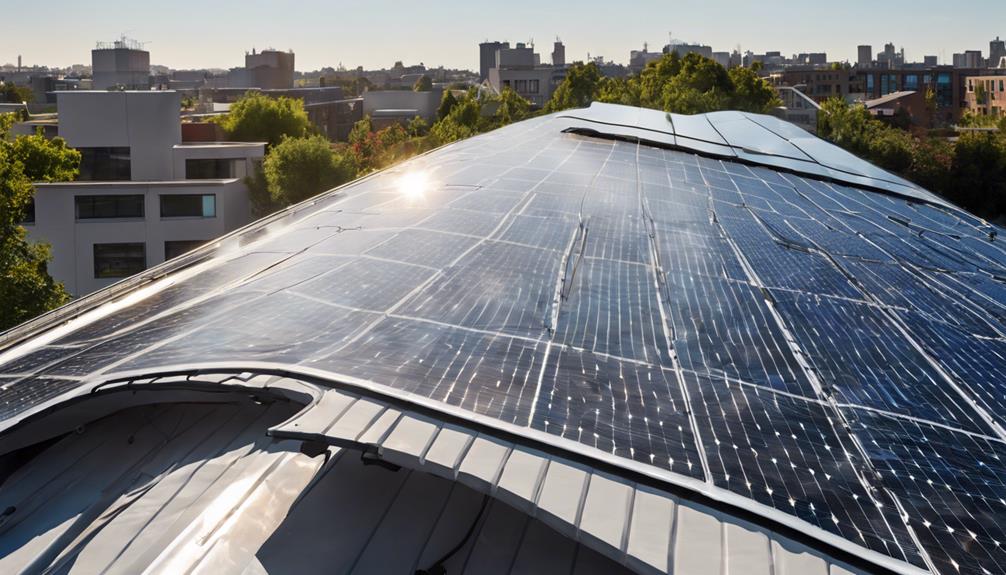
In today’s world, where renewable energy is becoming increasingly essential, flexible solar panels are emerging as a game-changer in the solar energy landscape. With their lightweight design and adaptability, these solar panels are revolutionizing the way we harness solar power. This blog post will explore everything you need to know about flexible solar panels, including their benefits, applications, and how they compare to traditional solar panels.
What Are Flexible Solar Panels?
Flexible solar panels are a type of photovoltaic panel that can be bent and shaped to fit various surfaces. Unlike traditional solar panels, which are typically rigid and heavy, flexible solar panels are made from thin-film solar cells, allowing them to be lightweight and versatile. These panels can be constructed from various materials, including organic photovoltaics, cadmium telluride, and amorphous silicon. Their flexibility makes them ideal for a wide range of applications, from residential rooftops to outdoor gear and portable devices.
The Advantages of Flexible Solar Panels
One of the most significant advantages of flexible solar panels is their lightweight nature. Traditional solar panels can be cumbersome and require strong support structures, whereas flexible panels can be easily mounted on various surfaces, including curved or irregular shapes. This makes them ideal for use on vehicles, boats, and even tents. Additionally, flexible solar panels are often more durable than their rigid counterparts, as they are less prone to breakage and can withstand extreme weather conditions, making them a reliable choice for outdoor applications.
Applications of Flexible Solar Panels
Flexible solar panels have a wide array of applications across different industries. In the automotive sector, these panels can be integrated into the roofs of electric vehicles, providing additional energy for onboard systems and extending the driving range. In the marine industry, flexible solar panels can be installed on boats and yachts, allowing for sustainable energy generation while on the water. Furthermore, they are increasingly used in portable solar chargers, which are perfect for camping, hiking, and other outdoor activities. With their adaptability, flexible solar panels can be employed in innovative ways to promote sustainability and energy efficiency.
How Do Flexible Solar Panels Compare to Traditional Solar Panels?
When comparing flexible solar panels to traditional solar panels, it’s essential to consider their efficiency and performance. While flexible panels are generally less efficient than traditional silicon panels, advancements in technology are narrowing this gap. Flexible solar panels typically have conversion efficiencies ranging from 10% to 15%, while rigid panels can achieve efficiencies of up to 22%. However, the versatility and lightweight nature of flexible panels often outweigh this disadvantage for specific applications. Homeowners and businesses must assess their energy needs and the specific use cases to determine which type of panel is best suited for their situations.
Installation and Maintenance of Flexible Solar Panels
Installing flexible solar panels is relatively simple compared to traditional panels. Their lightweight design allows for easy handling and installation, often requiring fewer tools and equipment. Many flexible solar panels come with adhesive backing, allowing them to be directly applied to surfaces without the need for mounting brackets. Maintenance is also straightforward, as these panels can be easily cleaned with water and a soft cloth. Regular inspections for wear and tear are recommended, especially in harsh environments, but overall, flexible solar panels are low-maintenance compared to traditional options.
Cost Considerations for Flexible Solar Panels
The cost of flexible solar panels can vary significantly based on the technology used, brand, and installation requirements. Generally, flexible panels are more affordable than traditional solar panels, making them an attractive option for budget-conscious consumers. However, it’s essential to consider the long-term investment; while the initial cost may be lower, flexible panels typically have a shorter lifespan and lower efficiency, which can impact long-term savings on energy bills. Homeowners and businesses should weigh the upfront costs against potential future energy savings when deciding which type of solar panel to invest in.
Future Trends in Flexible Solar Panel Technology
The future of flexible solar panels looks promising, with ongoing research and development focused on enhancing efficiency and durability. Innovations in materials, such as perovskite solar cells, have the potential to improve the performance of flexible panels significantly. Additionally, as the demand for lightweight and portable energy solutions continues to grow, more manufacturers are likely to invest in flexible solar technology. The integration of flexible solar panels in smart technology and IoT devices can also pave the way for more sustainable energy solutions in everyday life.
Conclusion: Embracing the Flexibility of Solar Energy
In conclusion, flexible solar panels represent a significant advancement in solar technology, offering a range of benefits that make them an attractive option for various applications. Their lightweight, adaptable nature allows for creative energy solutions in both residential and commercial settings. As technology continues to evolve, flexible solar panels are expected to become even more efficient and accessible, paving the way for a more sustainable future. By embracing the flexibility of solar energy, we can take significant strides toward reducing our carbon footprint and transitioning to renewable energy sources. Whether you’re considering solar energy for your home, vehicle, or outdoor adventures, flexible solar panels are worth exploring.
Incorporating flexible solar panels into our energy solutions not only promotes sustainability but also encourages innovation and creativity in how we harness the power of the sun.





